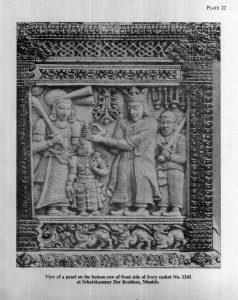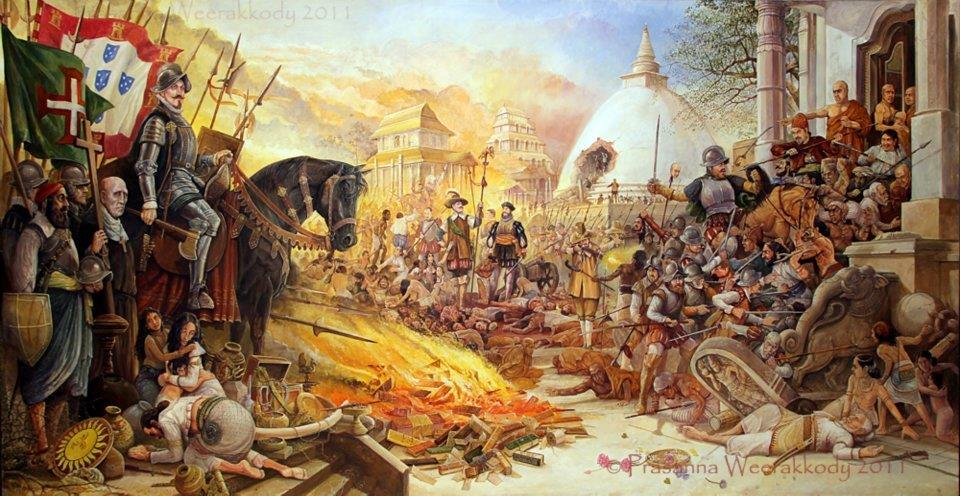
How Lankan Buddhists won the battle against proselytization
(MENAFN- NewsIn.Asia) By P.K.Balachandran/Ceylon Today
Sri Lankan Buddhists came under a sustained and frontal assault by Christian missionaries during Portuguese and Dutch rule for nearly three centuries (1505 to 1796). Given the adverse balance of power, many Buddhists compelled or enticed to convert to Roman Catholicism under the Portuguese and to Calvinism under the Dutch. But by the adoption of a variety of tactics, tailored to suit the power-equation at any given point of time, Lankan Buddhists kept blunting the attack and managed to preserve Buddhism as the dominant religion of the island.
Sir James Emerson Tennent, Colonial Secretary from 1841 to 1850, traces the ultimate success of the Sinhala Buddhists to one of their innate qualities. In his book Christianity in Ceylon (John Murray, London, 1850), Tennent says: ' In the hands of the Christian missionary they (the Buddhists) are by no means the plastic substance which such a description would suggest – capable of being molded into any form or retaining permanently any casual impression – but rather an yielding fluid which adopts its shape to that of the vessel into which it may happen to be poured, without any change in its quality or any modification of its character.'
The nature of the assault on Sinhala-Buddhism and the ingenious ways in which the Buddhists tackled and overcame the threat are graphically described by Prof.P.V.J.Jayasekera in his book: Confrontations with Colonialism Vol:1 1796-1920 (Vijitha Yapa, 2017). Jayasekera uses the term 'Christian colonialism' for Portuguese and Dutch rule as both Christianity and colonialism as a politico-economic system went hand in hand. The agenda of the colonialists was to exercise political, economic and spiritual control over their subjects simultaneously. Indeed, the spiritual and the temporal reinforced each other.
The ideology of 'Christian colonialism' was rooted in the assertion of Pope Innocent IV in the 13 th.Century, that, as the Vicar of Christ, the Pope had the power not only over Christians but also over non-believers. Through a series of Papal Bulls and Inter Caeteras from 1455, the Portuguese and the Spanish were given the power to exercise temporal and spiritual control over believers and heathens the world over. They were authorized to 'vanquish, enslave, humiliate or subdue the non-believer in pursuance of the divine mission.'
In Sri Lanka, the Portuguese systematically destroyed Buddhist, Hindu and Islamic places of worship. Harsh laws were enacted to prevent the practice of indigenous religions. At that time, Lankan Buddhists believed that salvation could be reached through multiple paths and therefore allowed the Portuguese to engage in conversion. King Buvanekabau of Kotte (1458-1550) even invited missionaries, though he himself refused to convert.
But his grandson and successor, Dharmapala (aka Don Juan), converted in 1557. Put off by that, the Buddhists revolted. Thirty Bhikkus were martyred. There were at least ten popular revolts in 44 years. One of which was led by Edirille Rala (1594-1596) which the Portuguese described as the 'revolt of the Sinhalese nation'. Portuguese chronicler Queroz noted that a saintly monk 'Budavance' was behind the uprising in Sitavaka. Missionaries and churches were attacked. In 1630-1631, destruction of Portuguese properties was extensive. To put it down, the Portuguese stepped up destruction of places Buddhist and Hindu worship.
Interestingly, many of the rebel leaders like Edirille Rala, Kangara Arachchi and Nikapitiya Bandara were themselves converts! Many who converted for one reason of the other eventually revolted or relapsed to their old faith. This made the Portuguese (and later the Dutch) despair that conversion of a Sinhalese meant nothing really. Even 50 years after the establishment of Portuguese rule on the West coast, they were busy destroying Buddhist temples showing that missionary activity had not borne fruit. Disappointed with adult conversion, the Portuguese concentrated on children in the schools they set up.

The symbolic crowning of the Kotte King Don Juan Dharmapala by the King of Portugal after his convesion to Christianity.
Dutch Used Laws
The Dutch, who ruled Sri Lanka from 1658 to 1796 immediately after the Portuguese, were less violent but more legalistic in their proselytization. The Dutch used laws backed by a system of harsh punishments.. Baptism was needed to bequeath property. Marriages had to be registered in church. Many Buddhists had to convert on the death bed to bequeath their property to their heirs. A non-convert's evidence was not admissible in court.
Schools were established mainly for the purpose of conversion and school masters were made in-charge of adherence to Christian practice. The Governors of the Dutch provinces (Disawes) accompanied by Dutch pastors inspected schools four times a year with armed escorts. Those who neglected their duties were severely punished. Heavy fines and forced labor in chains for three months were the order of the day. On seeing that people were ignoring the Placcaats or orders, the Dutch in 1732 issued an order asking all village headman to eliminate Buddhist temples in their areas. To enforce it, the Dutch enhanced punishment to 2000 Rix dollars or chained labor for 25 years.
But despite the harshness of the punishments, defiance by the Buddhists continued both passively and violently. In 1646, Kottapitiya Appuhamy of Weligama Korale, rebelled. Monks and Silvatas (lay preachers) openly mocked Dutch pastors. The put up anti-Christian arguments written on Ola leaves on tree trunk so that people could read.
Monks and lay preachers from Galle and Matara were particularly active, which made the famous Goan Jesuit missionary Fr.Jacome Gonsalves say that the Buddhists of Galle and Matara were particularly attached to Buddhism. The southern rebels had the full support of the Kandyan monks also. A desperate Dutch Galle district Church Council wrote to Amsterdam in 1736 saying: 'The native has an aversion to Christianity and is attached to Heathenism.'
The Buddhists fought hard for the recovery of the Kelaniya Raja Maha Viharaya, which the Buddha had visited and which the Dutch occupied. The Dutch had used the temple's stones to build the Colombo Fort. In 1647, the Kandyan King Rajasinghe II (1629-1687) asked the Dutch to vacate the temple but he was ignored. Subsequently, King Wimaladharmasirya II (1687-1707) asked for permission to Buddhists to at least worship there. But the Dutch would not allow idolatry. The Dutch relented only 140 years later in 1780, when they decided that persecution would not work with the Sinhalese Buddhists.
(The painting at the top shows the Portuguese destroying a Buddhist temple in Sri Lanka: Picture credit goes to Prasanna Weerkkody)

Legal Disclaimer:
MENAFN provides the
information “as is” without warranty of any kind. We do not accept
any responsibility or liability for the accuracy, content, images,
videos, licenses, completeness, legality, or reliability of the information
contained in this article. If you have any complaints or copyright
issues related to this article, kindly contact the provider above.


















Comments
No comment